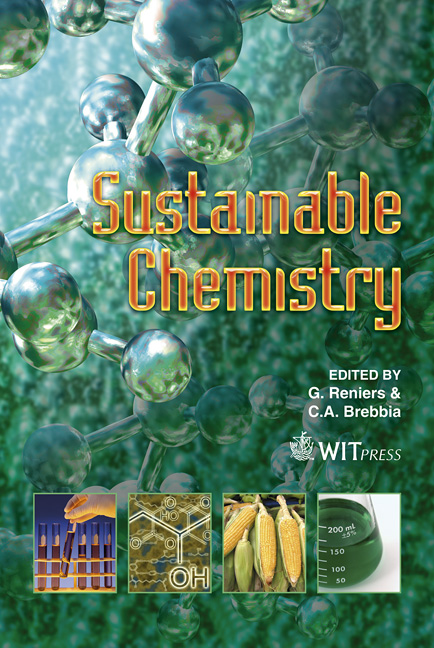Bridging The Gap Between Cellulose Chemistry And Heterogeneous Catalysis
Price
Free (open access)
Transaction
Volume
154
Pages
12
Page Range
129 - 140
Published
2011
Size
995 kb
Paper DOI
10.2495/CHEM110131
Copyright
WIT Press
Author(s)
S. Van de Vyver, J. Geboers, L. Peng, F. de Clippel, M. Dusselier, T. Vosch, L. Zhang, G. Van Tendeloo, C. J. Gommes, B. Goderis, P. A. Jacobs & B. F. Sels
Abstract
Although cellulosic biomass offers a promising alternative as an abundant renewable resource in the production of biofuels and platform chemicals, so far only a few studies have reported its aqueous-phase conversion into glucose or sugar alcohols using solid chemocatalysts. The principal reason is that these polymeric biomolecules with semi-crystalline structure cannot penetrate the pores of conventional heterogeneous chemocatalysts. New advances in the conversion of cellulose thus require the design of efficient multifunctional catalytic systems with sterically accessible acid and metal sites. Keywords: biomass, carbon nanofibers, cellulose, glucose, heterogeneous catalysis, hydrogenation, hydrolysis, nanocomposites, nickel, sugar alcohols. 1 Introduction Environmental concerns about the depletion of fossil fuel reserves, the impact of anthropogenic CO2 emissions and increasing energy demands have encouraged the exploration of new catalytic methods for converting cellulose into valuable
Keywords
biomass, carbon nanofibers, cellulose, glucose, heterogeneous catalysis, hydrogenation, hydrolysis, nanocomposites, nickel, sugar alcohols





